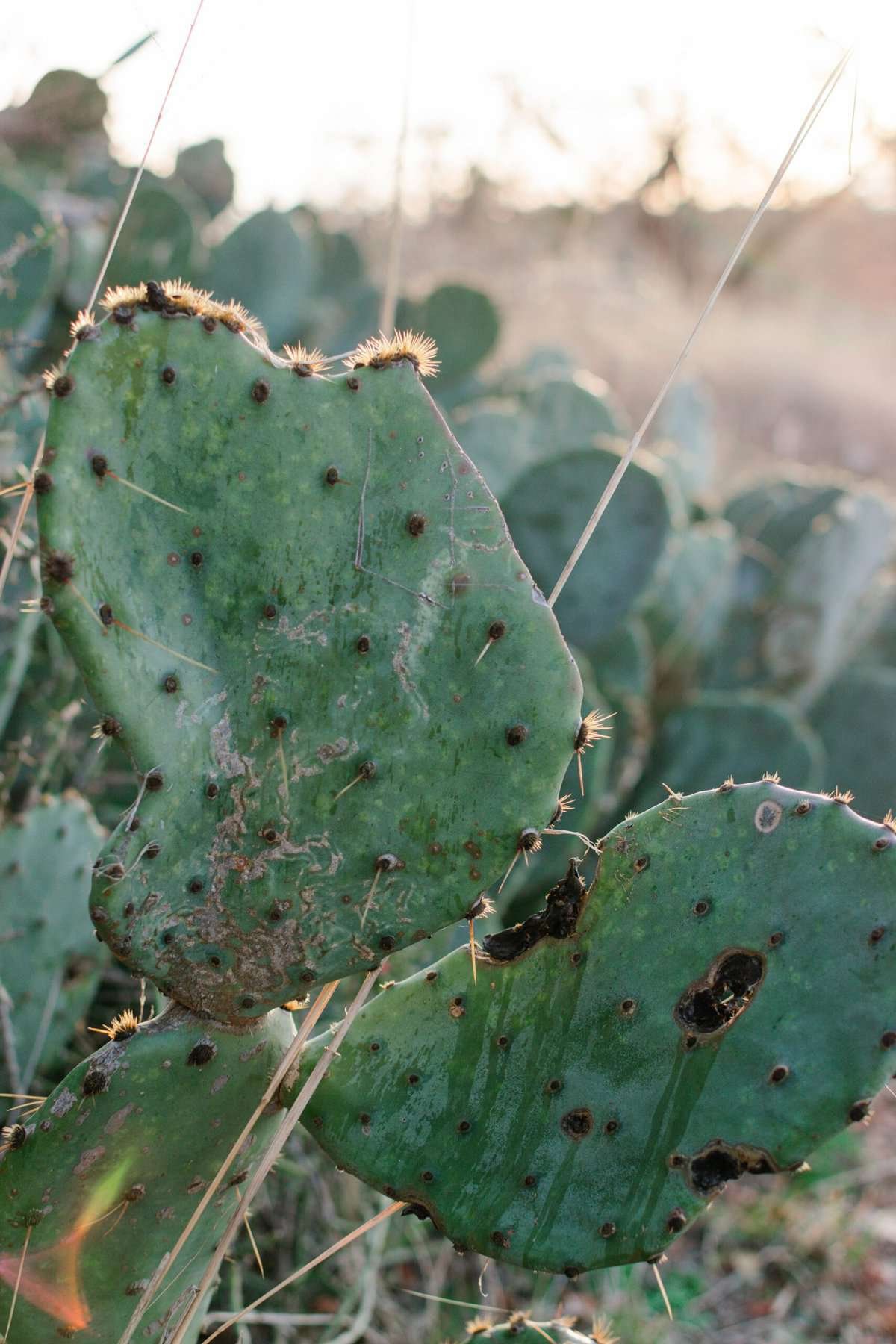If you’ve ever wondered how to transform those prickly green pads of nopal cactus into perfectly sliced strips or neatly cubed pieces for your favorite recipes, look no further. Cutting nopal can be a bit challenging, but fear not! In this article, we’ll guide you through the best way to tackle this deliciously versatile ingredient, ensuring your culinary adventures with nopal are a breeze. From the right tools to handy techniques, we’ve got you covered. So, grab your knife and let’s get slicing!
Selection of Nopal
Choosing fresh nopal
When selecting nopal, it is important to choose fresh pads for the best results. Look for pads that are bright green in color with minimal blemishes or discoloration. Avoid any pads that appear wilted or have soft spots, as these may indicate spoilage. Additionally, try to find nopal pads that feel firm to the touch, as this indicates freshness.
Selecting the right size and shape
The size and shape of the nopal pads you choose will depend on your personal preference and the specific recipe you plan to use them in. If you prefer long, slender strips, look for longer nopal pads. For smaller, bite-sized pieces, opt for smaller pads or consider cutting larger pads into cubes. Keep in mind that the size and shape of the nopal will affect the cooking time and texture, so choose accordingly.
Tools and Equipment
Knife
A sharp knife is essential for cutting nopal effectively. Choose a knife with a sturdy blade that allows for precise cuts. It is recommended to use a chef’s knife or a vegetable knife with a straight edge for the best results. Make sure to keep your knife sharpened regularly to ensure clean cuts and prevent accidents.
Cutting board
Having a spacious and stable cutting board is crucial when working with nopal. Choose a cutting board made of a material that is easy to clean and won’t absorb odors or colors from the nopal. Opt for a size that allows you to comfortably cut the nopal pads without overcrowding the surface.
Kitchen gloves
Nopal pads have small, delicate spines that can be difficult to remove. To protect your hands from potential injury, it is advisable to wear kitchen gloves while handling and cutting the nopal. Look for gloves that provide a good grip and are comfortable to wear for extended periods.
Tongs
Tongs are useful for holding the nopal pads securely while cleaning and cutting. They offer a firm grip and keep your hands at a safe distance from the knife blade. Choose tongs with a sturdy construction and a comfortable handle for easy maneuverability.
Kitchen towel
Having a kitchen towel or paper towels nearby is handy for wiping and cleaning the nopal pads. This helps remove any excess moisture or dirt that may be present on the surface of the pads. It is important to ensure the nopal pads are dry before proceeding to the cutting stage.

Preparing the Nopal
Cleaning the nopal pads
Before cutting the nopal, it is crucial to clean the pads thoroughly to remove any dirt, debris, or residue. Start by rinsing the nopal pads under cool running water to remove loose particles. Then, use a kitchen towel or paper towel to wipe the pads and ensure they are free from any remaining dirt. Taking the time to clean the nopal properly will result in a better final product.
Removing the spines
Nopal pads have small spines called glochids that can cause discomfort if ingested or come into contact with the skin. To remove these spines, take a kitchen glove-covered hand or tongs and carefully run it along the surface of the nopal pad. This will dislodge any spines that may be present. Be cautious when handling the pads without gloves to avoid any accidental contact with the spines.
Removing the outer skin
Some recipes may call for the removal of the outer skin of the nopal. This step is optional and depends on personal preference. To remove the outer skin, use a sharp knife to carefully slice off the outer layer of the nopal pad. Take your time and make precise cuts to avoid wasting too much of the edible flesh.
Cutting Nopal into Strips
Method 1: Lengthwise strips
To cut nopal into lengthwise strips, begin by placing the cleaned and prepared nopal pad on a cutting board. Hold the pad securely with one hand or using tongs. With the other hand, use a sharp knife to make vertical cuts along the length of the pad. Aim for uniform widths, but adjust according to your desired thickness. Continue cutting until the entire pad is sliced into strips. This method is great for recipes that require longer pieces of nopal.
Method 2: Crosswise strips
For crosswise strips, start by holding the prepared nopal pad firmly on the cutting board. Using a sharp knife, make horizontal cuts across the width of the pad. Again, aim for even thickness and adjust as necessary. This method is ideal for recipes that call for shorter nopal strips or if you prefer a different presentation.
Method 3: Diagonal strips
Diagonal strips can add an interesting dimension to your nopal dishes. Begin by placing the nopal pad at an angle on the cutting board. Hold it securely with one hand or using tongs. With a sharp knife, make diagonal cuts along the length of the pad, creating triangular-shaped strips. This method is particularly useful if you want to showcase the vibrant green color of the nopal in your recipes.

Cutting Nopal into Cubes
Method 1: Regular cubes
To cut nopal into regular cubes, start with a prepared nopal pad on a cutting board. Holding the pad securely, use a sharp knife to make vertical and horizontal cuts, creating uniform square-shaped pieces. Adjust the size of the cubes to your preference. Regular cubes are versatile and can be used in a variety of recipes.
Method 2: Diamond-shaped cubes
For diamond-shaped cubes, begin by cutting the prepared nopal pad into regular squares using the method mentioned above. Then, carefully make diagonal cuts from one corner of each square to the opposite corner. This will create diamond-shaped cubes with pointed edges. Diamond-shaped nopal cubes can add an aesthetic touch to your dishes.
Method 3: Triangular cubes
To achieve triangular cubes, follow the steps for regular cubes mentioned earlier. Once you have square-shaped pieces, make diagonal cuts from each corner towards the center, creating triangular-shaped cubes. Triangular cubes are visually appealing and can lend an interesting texture to your recipes.
Safety Measures
Using kitchen gloves
To ensure your safety when handling nopal, always wear kitchen gloves. Nopal pads have small spines that can cause discomfort if touched. By wearing gloves, you protect your hands from potential injury and avoid accidental contact with the spines.
Holding the nopal securely
When cutting nopal, it is essential to hold the pad securely to prevent it from slipping. Use a kitchen towel or tongs to maintain a firm grip on the nopal while you cut. This will help minimize the risk of accidents and ensure clean, precise cuts.

Tips and Tricks
Chilling the nopal before cutting
If you find the nopal pads difficult to handle or cut, try chilling them in the refrigerator for a few minutes before starting the preparation process. This can firm up the texture and make cutting more manageable.
Keeping the knife sharp
A sharp knife is crucial for clean and precise cuts. Regularly sharpen your knife to maintain its sharpness. Dull knives can slip and cause accidents, so it’s important to keep the blade sharp for efficient and safe cutting.
Using a non-slip cutting board
To prevent accidents during the cutting process, use a non-slip cutting board. This will ensure stability and prevent the cutting board from moving or sliding while you work. Look for cutting boards with a non-slip surface or place a damp kitchen towel underneath for added grip.
Using a ruler or guide for consistent sizes
For recipes that require precise measurements or uniform cuts, consider using a ruler or guide. Place the ruler or guide on the cutting board next to the nopal pad to ensure consistent sizes. This can be especially helpful when working with strip or cube dimensions that need to be exact.
Storing Nopal
Storing cut nopal in the refrigerator
If you have leftovers or prepare nopal in advance, store the cut pieces in the refrigerator. Place the nopal strips or cubes in an airtight container or a resealable plastic bag. This will help preserve the freshness and prevent any contamination. Consume the stored nopal within a few days for the best quality.
Freezing cut nopal
To prolong the shelf life of cut nopal, you can also freeze it. Place the nopal strips or cubes in freezer-safe containers or bags, ensuring they are well-sealed. Label the containers with the date to keep track of freshness. Frozen nopal can be stored for several months. However, keep in mind that the texture might change slightly once thawed.
Utilizing Nopal Strips or Cubes
Grilling or roasting
Nopal strips or cubes can be delicious when grilled or roasted. The heat intensifies the flavors and adds a smoky taste. Simply brush the nopal with oil, season with your desired spices or marinade, and cook on a grill or in the oven until tender. Serve them as a flavorful side dish or use them as a filling in tacos or fajitas.
Sauteing or stir-frying
Another great way to utilize nopal strips or cubes is by sautéing or stir-frying them. Heat some oil or butter in a pan, and add the nopal. Stir-fry until cooked, but still slightly crunchy for a delightful texture. Season with your favorite herbs and spices, and serve as a savory addition to stir-fries, rice dishes, or vegetable medleys.
Adding to soups or stews
Nopal strips or cubes can enhance the flavors and nutritional value of soups and stews. Add them to your favorite broth-based or bean-based soups for an extra punch of texture and taste. The nopal will absorb the flavors of the soup while retaining its unique characteristics.
Incorporating into salads or salsas
For a refreshing addition to your salads, consider adding nopal strips or cubes. They provide a subtle crunch and a mild tangy flavor that pairs well with a variety of salad ingredients. Nopal can also be incorporated into salsas for a unique twist, adding texture and a touch of acidity.
Making pickled nopal
Pickled nopal, also known as nopalitos, is a popular and versatile condiment in Mexican cuisine. Start by cutting the nopal into strips or cubes. Then, immerse them in a mixture of vinegar, water, salt, and your choice of seasonings. Allow the nopal to marinate for a few hours or overnight in the refrigerator. The result is a tangy and slightly sour pickle that can be enjoyed on its own or as an accompaniment to various dishes.
Traditional Nopal Recipes
Nopalitos con Huevos (Nopal with Eggs)
Nopalitos con Huevos is a classic Mexican breakfast dish that combines nopal with scrambled eggs. Start by sautéing nopal strips until cooked, then add beaten eggs and cook until desired doneness. Season with salt, pepper, and any additional spices or herbs you desire. This hearty and nutritious dish can be enjoyed with tortillas, refried beans, or as a filling for breakfast burritos.
Ensalada de Nopales (Nopal Salad)
Ensalada de Nopales is a refreshing and vibrant salad that showcases the flavors and textures of nopal. Start by blanching the nopal strips until tender, then shock them in ice water to retain their color and crispness. Combine the nopal with diced tomatoes, onions, cilantro, and a dressing of lime juice, olive oil, salt, and pepper. Toss the ingredients together and let the flavors meld for a delicious and nutritious salad.
Tacos de Nopales (Nopal Tacos)
Tacos de Nopales are a delicious vegetarian option for taco lovers. Start by grilling or sautéing nopal strips until slightly charred and tender. Warm up corn tortillas and fill them with the grilled nopal, along with your choice of toppings such as salsa, avocado, cilantro, and cheese. These flavorful tacos provide a wholesome and satisfying meal.

